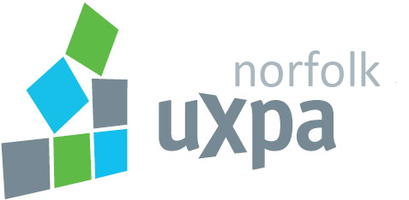
The goal of the One Laptop per Child organization is to provide specially designed, low-cost laptops to children in the developing world. Organization founder Nicholas Negroponte details the campaign and the "Give One Get One" effort in the United States and Canada on the NewsHour.
Bottom Line: Get one for your own child and donate one to a child in need. Scroll down for pictures.

Don't have time to listen? Get a transcript of the NewsHour audio orginally found HERE:
JEFFREY BROWN: It has neon green ear-like antennas and a white plastic frame. It may look like a toy, but it's intended to change the world.
Called the XO, it was developed by the One Laptop per Child project, a nonprofit organization whose goal is to bring low-cost computers to children in the developing world. Pilot programs like this one in Brazil are underway.
Water-resistant and drop-proof, the laptop can run in places where power is scarce, with a long-life battery and a crank. It offers both wireless Internet and the so-called Mesh Network, meaning it can connect with other XO laptops nearby.
It offers word processing and Web browsing, along with a video camera and microphone. And while hopes were sky high at the beginning, getting governments to sign on has turned out to be a slow process.
Nicholas Negroponte is the founder and chairman of One Laptop per Child. He's on leave from the Massachusetts Institute of Technology, where he was the director of its media lab, and he joins me now.
Welcome to you.
NICHOLAS NEGROPONTE, One Laptop Per Child: Hello.
JEFFREY BROWN: What is the problem that this is intended to solve, and how does it do it?
NICHOLAS NEGROPONTE: The problem is poverty, and the idea is to eliminate poverty through education, because 50 percent of the children in this world don't get education. So we're talking about vast numbers -- 1.2 billion children in total in the age category that we call primary school -- half of them are not getting education.
JEFFREY BROWN: Now, in the introduction I listed some of the things that your computer could do. What was the key thing, in terms of technology, that you had to get right to make this workable?
NICHOLAS NEGROPONTE: Jeff, keep in mind that the kids that we are targeting are, first of all, in very remote parts of very poor countries. They have no electricity. In many cases, they don't even have a school. It's under a tree.
So we have to build a laptop that, first of all, doesn't plug into the wall, doesn't have an AC adapter, so it has to work with human power. You can crank it; you can do other things, or very inexpensive solar panels. So power was a very important element.
Needed to work in the sunlight. You had to use it as an electronic book and be able to read it outdoors, as well as indoors. It had to create a network, because all the kids in the village -- there is no phone system or hot spot. They have to make the network automatically with the laptops. Just those three things forced us to do something from the bottom up.
JEFFREY BROWN: And how long did that take you to work the technology?
NICHOLAS NEGROPONTE: It took about two years and roughly 500 people doing things in different parts of the world, and we're in mass production today.
 Obstacles along the way
Obstacles along the wayJEFFREY BROWN: Now, you have been quoted recently as saying that you're disappointed, in part, by the response. You run into some obstacles. It looks as though some governments are wondering whether this is the best way to spend their money.
NICHOLAS NEGROPONTE: My disappointment isn't in the response. My disappointment has been, perhaps, in me misjudging the difference between a head of state saying that he'll do it, shaking hands, photo opportunities, all sorts of publications and announcements, and then actually getting a $200 million check in the mail. So there's a bigger goal.
JEFFREY BROWN: You've actually had to be sort of an international salesman for this project.
NICHOLAS NEGROPONTE: I've traveled literally every day of the past two years.
JEFFREY BROWN: But I read a quote from an Indian minister. He said, "We need classrooms and teachers more urgently than fancy tools." Now, how much do you run into that kind of sentiment?
NICHOLAS NEGROPONTE: We run into that sentiment particularly from ministers, ministers of education, whose job it is to basically run schools. Now, that minister of education didn't take into consideration that half his children aren't in school.
Now, you can solve that by building more schools and training more teachers. But what you can also do in parallel -- not to exclude building schools and training teachers -- is to leverage the children themselves.
JEFFREY BROWN: These are the kinds of conversations you have around the world with government figures?
NICHOLAS NEGROPONTE: Absolutely. It's exactly this kind of conversation.
JEFFREY BROWN: Where to put the resources.
NICHOLAS NEGROPONTE: Where to put the resource. And what you do is you take this resource and you spread it over five years, and so you look at it as something like $40 per year. What's the best way to spend $40 per year?
JEFFREY BROWN: But where does a laptop go in the hierarchy of needs in countries like this? I mean, I was also reading about some aid organizations, and they wonder, if you're in a country where the basic need of fresh water, for example, clean water, what's the argument then?
NICHOLAS NEGROPONTE: The argument is very simple. Just substitute the word "education" for the word "laptop," and you'll never have the argument again.
JEFFREY BROWN: Don't think of this as a machine.
NICHOLAS NEGROPONTE: This is not, if you think of it … if you use the word "laptop," then people think maybe it's like an iPod, and do kids really need an iPod? Think of it as education.
Now, this is a school in the box, as well as something that the child can use seamlessly at home. Because it's one laptop per child, the child has it 24 by 7. Now, if you think of school, under the best conditions, excellent teacher, really good school, the developing world, it's two shifts.
So the child spends 14.5 hours a week in the perfect classroom -- which is rarely the case. And here what we do is you have the child that takes it home, uses it for music, uses it for games, uses it for browsing, introduces it to the family, leaks it to the culture, and the children are the agents of change.
JEFFREY BROWN: And what about the content? What is the content that goes on this that educates the child?
NICHOLAS NEGROPONTE: Gutenberg did not write the books, OK, so we want to encourage content, and we're encouraging wiki textbooks.
JEFFREY BROWN: Explain what you mean by wiki.
NICHOLAS NEGROPONTE: Well, wiki is just that it's contributed by the community, that what is written is written by everybody, not just experts. And the concept of the students and the teachers creating content is a very important one.

'Give One, Get One'
JEFFREY BROWN: This project program that you have, the "Give One, Get One" program, allows Americans to buy two, give one to a child in the developing world. Now that by itself, I suppose, isn't going to solve the larger problems. What is that to do, a jump start of the whole process?
NICHOLAS NEGROPONTE: What Give One, Get One does, it's like starting an avalanche. You don't need much snow to create a big avalanche. So it's our belief -- and this is why we've turned to the American people and said, "Join us. For $399, you can get one and give one."
And at the end of this, we'll see how many we have, and we can go into the poorest countries -- we've already made commitments to Rwanda, Haiti, Afghanistan, Mongolia, and we've gone into places that are landlocked or very, very poor. And it's not a $100 laptop or a $188 laptop. It's a zero-dollar laptop in the Give One, Get One program.
JEFFREY BROWN: I'll give you a chance to let people know how to do it. How do they find it?
NICHOLAS NEGROPONTE: Well, you can go to what's called LaptopGiving.org. Or, if you forget that, you can just go to laptop.org, which is our home site, learn more about us, and it will tell you how to get to the giving.
JEFFREY BROWN: Speaking of the price, this was touted as the $100 laptop at the beginning. Now it's closer to $200. Are you fairly confident that that's where it will settle? Are the finances there to -- I mean, is that how it's going to work?
NICHOLAS NEGROPONTE: It will settle at $100 or less. We launch at a slightly higher level, just because the economies of scale aren't there and other things that have pushed the price up. Then what we have pledged to do is to not add features. In other words, there isn't going to be a model with this extra feature and that extra feature.
What's going to happen is it's going to stay constant. The price is going to go down. We think it will take about two years to hit $100 and then continue on below it. And when we get down to about $50, we might think of adding some features.
JEFFREY BROWN: Finally, you've set such lofty goals, I asked you at the beginning what this is about, and you said poverty. We're talking about education of millions of children. How will you judge success?
NICHOLAS NEGROPONTE: We will judge success by the number of children who are getting primary education. In some of our test sites around the world, we have found that the second year we run the pilot project, 100 percent more children come to school.
And what that's telling us is very important. The 6-year-olds are telling the other 6-year-olds in town that school is cool. And we think that very often kids in the developing world drop out of school because they have to help their parents in the field. Rubbish. That's rarely the case. What's usually happening is they drop out of school because it's boring or it's irrelevant, and we want to change that.
JEFFREY BROWN: And the laptop is helping make that case?
NICHOLAS NEGROPONTE: Oh, it's completely changed it. In the schools where this has been going on, and in some cases in Cambodia it's been going on for four or five years, all the children continue, continue on. I mean, the passion for learning, the joy of learning, and just the window of opportunity that this provides is boundless.
JEFFREY BROWN: And your job now is to continue going around the world to just try to make that case?
NICHOLAS NEGROPONTE: Well, now the job is … the laptop has to speak for itself, and I have to stop traveling.
JEFFREY BROWN: All right, Nicholas Negroponte, thanks very much.
NICHOLAS NEGROPONTE: Thank you.
RAY SUAREZ: A follow-up to Jeff's conversation. The One Laptop Per Child Foundation announced today it plans to extend the "Give One, Get One" program throughout the holiday season until December 31st.





























